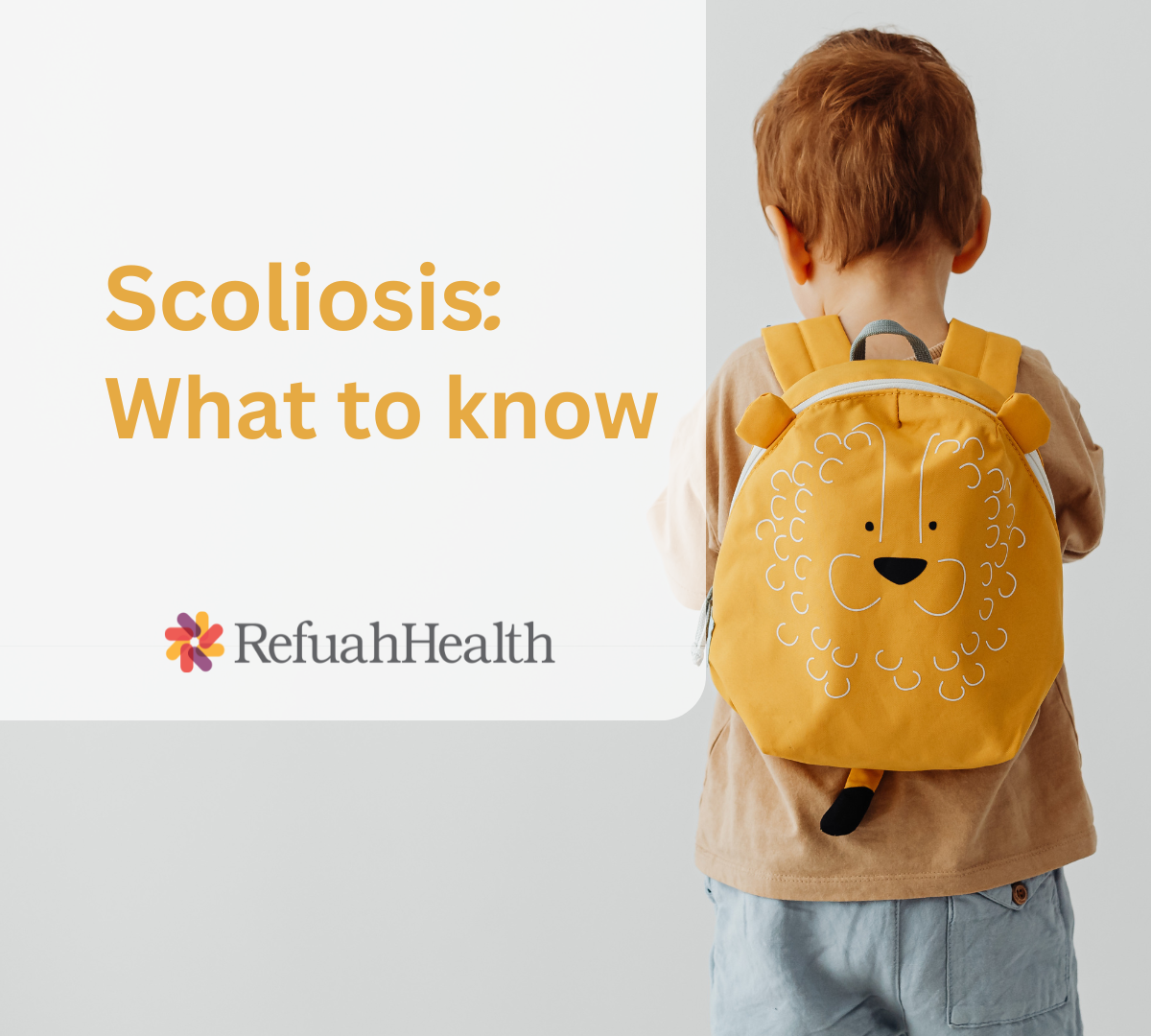
Childhood is a miraculous time of intense growth and development. Each year, our children add inches to their height, and by the time they reach their teenage years we may be looking them in the eyes!
It is important to consistently monitor growth throughout childhood, and the beginning of the school year is a great time to check-in with your child’s provider. One condition that can develop during childhood, though more commonly shows up in adolescence, is scoliosis.
What is scoliosis?
Scoliosis is a side-to-side curve in the spine that can look like an “S” or a “C.” Our spines are made up of lots of bones called vertebrae. These vertebrae are connected by cartilage, which allows us to bend, stretch, balance, and walk. Scoliosis causes the vertebrae to form a curved line instead of being straight.
Most cases of scoliosis are mild, and don’t cause problems. More prominent curves can cause damage to joints, mobility issues, arthritis and pain.
When does scoliosis develop?
Children of any age can develop scoliosis and your provider will monitor spine development at well checks. However, the most common type of scoliosis, known as idiopathic scoliosis, develops when children reach adolescence.
What causes scoliosis?
Idiopathic scoliosis is a bit of a mystery. While no one knows for sure why some children will develop the condition, research seems to indicate that it runs in families. If you or someone in your family has been diagnosed with the condition, your children should be more closely monitored. While scoliosis affects both genders, girls are more likely to develop the condition.
Scoliosis isn’t caused by anything that your children might do like carrying a heavy backpack, bad posture, or playing sports. We don’t have control over the development of this condition.
What are the signs and symptoms of scoliosis?
Sometimes scoliosis is easy to detect. A curve in the spine might make the body tilt to the left of right. If your child has scoliosis, it might look like they are leaning to one side. Sometimes one shoulder is higher than the other or one shoulder blade might stick out more than the other. If the spine is twisted, your child’s ribcage might stick out more when they bend over.
Often, however, scoliosis isn’t obvious. Most well child check’s will include a thorough examination of your child’s spine. Sometimes schools offer school-based scoliosis screening programs to help monitor children’s health.
How is scoliosis diagnosed?
If you suspect that your child might have scoliosis, make an appointment with your healthcare provider. Your provider will exam your child’s spine. Since scoliosis can run in families, your provider will ask questions about your family’s health.
Your provider might refer you to an orthopedic specialist to make a diagnosis. These experts treat diseases of bones and muscles and are experienced in treating children with scoliosis.
Scoliosis is diagnosed by severity depending on the curvature of the spine with levels of mild, moderate, and severe. Since the curvature can worsen as your child grows, early diagnosis and intervention can prevent severe symptoms and get your child back on track.
How is scoliosis treated?
Most cases of scoliosis are mild and do not require treatment. Your provider will continue to monitor your child’s spine growth at regular checkups to make sure it doesn’t worsen.
Some simple methods to treat mild scoliosis include aerobic exercises to improve physical health or stretching out the back to improve movement and flexibility. In cases where there isn’t a lot of pain or discomfort, these simple steps can help improve your child’s condition.
If your provider suspects the condition could worsen, they might want your child to wear a back brace until they finish growing. While a brace won’t correct the existing curve, it will stabilize and support the back and prevent the condition from worsening.
Though uncommon, patients with severe scoliosis might need surgery. There is no quick fix for scoliosis. If your child must wear a brace of have surgery, your provider might be able to recommend a support group that can offer strength and advice.
Can scoliosis be prevented?
Scoliosis cannot be prevented. If your child is at an increased risk of developing the condition based on family history, you might consider the following steps to maintain a healthy back posture:
- Stand straight and tall with your shoulders back
- Keep your head level and in line with your body
- Keep your feet shoulder-width apart
- Do not lock your knees
- Let your hands hang naturally at your sides
- Limit the amount of stress placed on the back (i.e., heavy backpacks)
If your child has scoliosis, an early diagnosis and proper treatment is important. When treatment is complete, patients often live full and active lives. This school year, make sure your child receives their annual wellness check, so they can stand tall and happy!